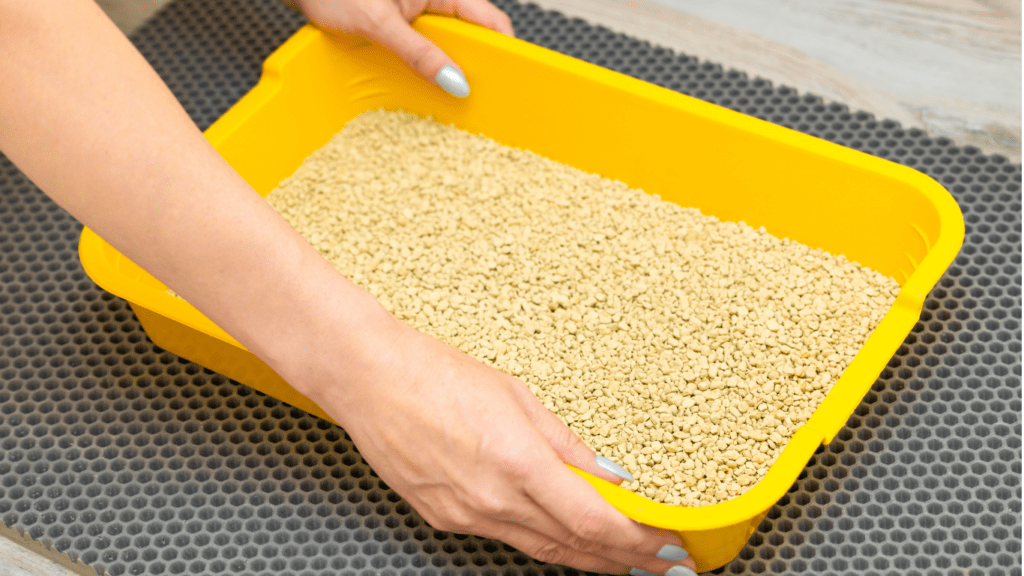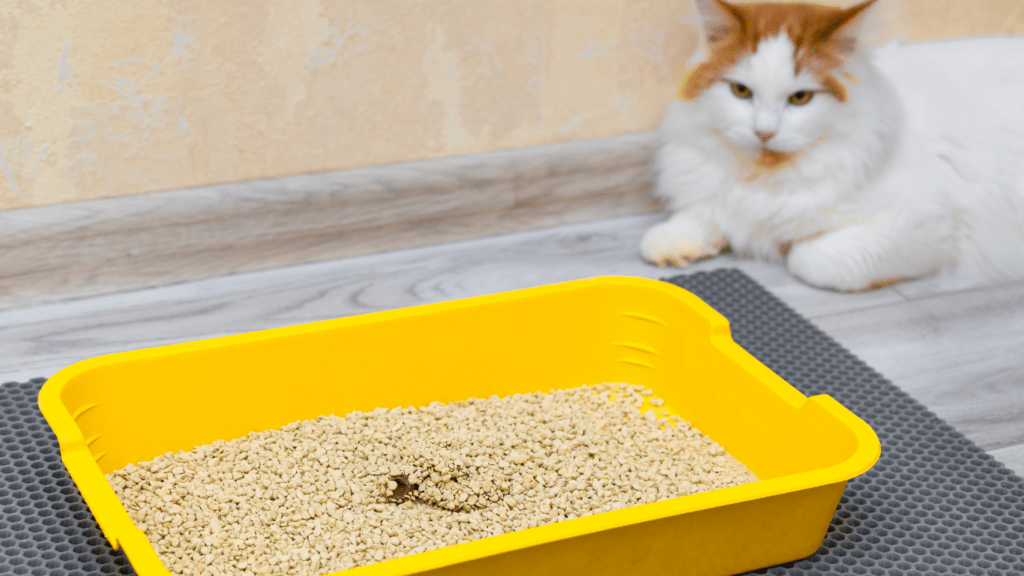Understanding the Basics
Training a pet to use a litter box starts with understanding their behaviors and needs. Identifying a specific spot where your pet feels comfortable is essential. Pets, especially cats and rabbits, often prefer quiet and private areas.
Choosing the right litter box is crucial. The box should be appropriately sized for your pet. For cats, a general rule is that the box length should be at least 1.5 times the length of the cat. For rabbits, consider a box with low sides for easy access. Clumping litter is usually the best option for odor control and ease of cleaning. Ensure the box is easy to clean and scoop daily to maintain hygiene.
Introducing your pet to the litter box requires patience. Place the pet inside the box after sleeping, eating, or playing, as these are common times pets need to relieve themselves. Observe your pet’s behavior, and if they show signs of needing to go, gently guide them to the litter box. Rewarding your pet with treats or praise reinforces positive behavior.
Location matters. Place the litter box in a quiet, low-traffic area. Avoid placing it near food or water dishes. If you have multiple pets, consider providing more than one litter box to prevent territorial disputes.
Monitoring and adjusting as needed ensures that training progresses smoothly. If your pet resists using the litter box, reconsider the type of litter, box size, or location. Sometimes small changes can make a significant difference in your pet’s willingness to use the litter box. If problems persist, consult a veterinarian to rule out medical issues.
Choosing the Right Litter Box
Selecting the right litter box is crucial for successful training. Ensure it fits your pet’s needs and preferences.
Types of Litter Boxes
Litter boxes come in several varieties. Each has unique features suited for different pets:
- Open Litter Boxes: Ideal for felines who prefer easy access. Examples include standard rectangular boxes.
- Covered Litter Boxes: Provide privacy for pets who seek seclusion. Common types include those with domes or enclosures.
- Self-Cleaning Litter Boxes: Great for owners seeking low maintenance. Options like automated raking systems keep the box clean.
- Disposable Litter Boxes: Convenient for travel or temporary use. Usually made of biodegradable materials.
Size and Location Considerations
The size and placement of the litter box significantly impact its usability.
- Box Size: Select a box larger than your pet to allow sufficient movement. For instance, large breed cats need more space.
- Location Selection: Position the box in a quiet, low-traffic area. Avoid placing it next to noisy appliances.
- Multiple Boxes: If you have multiple pets, provide several boxes. A good rule is one box per pet plus one extra.
Making thoughtful choices about the type and placement of your litter box can streamline the training process and ensure your pet’s comfort and success.
Selecting the Ideal Litter
Choosing the right litter is essential for creating a positive litter box experience for your pet. Different types of litter offer various benefits, affecting how easily your pet adapts to the box.
Clumping vs. Non-Clumping Litter
Clumping litter absorbs moisture, forming solid clumps that are easy to scoop. This type often utilizes materials like bentonite clay. Clumping litter makes daily cleaning simpler since waste removal is straightforward.
Non-clumping litter, made from substances like clay or recycled newspaper, absorbs moisture without forming clumps. While it requires regular full-box changes, it can be more economical for some.
Scented vs. Unscented Litter
Scented litter contains added fragrances designed to mask odors. This can keep litter boxes smelling fresher between cleanings. However, some pets find strong scents off-putting, which might deter box use.
Unscented litter avoids artificial fragrances but can still control odors if formulated well. It’s often better for sensitive pets or multiple-pet households as it reduces litter box aversion risks.
Introducing Your Pet to the Litter Box

Getting your pet comfortable with the litter box is crucial for successful training. Here’s how to introduce the litter box to your pet effectively.
Gradual Introduction Steps
Start the introduction slowly for better adjustment. Place the litter box in a quiet, accessible location where your pet feels safe. Make sure the box is easy to reach and free from obstacles. Initially, keep your pet confined to a smaller area with the litter box included. Gradually expand their space as they start understanding the box’s purpose.
Observe your pet’s behavior closely. When your pet shows signs of needing to relieve itself, gently place them in the litter box. Allow them to explore the litter and get familiar with the texture. Repeat this frequently until they start using the box independently.
Positive Reinforcement Techniques
Utilize positive reinforcement to encourage consistent use. Reward your pet with treats or verbal praise immediately after they use the litter box. Make sure the reward is immediate so they can associate it with the action. Consistency is key in this process.
Avoid scolding or punishing your pet for accidents outside the box. This could create anxiety and aversion to the litter box. Instead, clean the area thoroughly to remove any scent markers. Redirect your pet to the litter box with gentle guidance and encouragement.
Addressing Common Challenges
Training a pet to use a litter box can be challenging. Whether your pet has accidents or shows reluctance, there are effective strategies to address these issues.
Dealing with Accidents
Accidents happen despite careful training. Clean the soiled area thoroughly to remove any scent markers. Use enzymatic cleaners for best results. Avoid using ammonia-based cleaners, as they may mimic the smell of urine.
After cleaning, place the soiled material in the litter box. This helps your pet associate the box with appropriate elimination. If accidents occur frequently, assess whether the box is too small, the litter type is uncomfortable, or the location is inconvenient.
Troubleshooting Reluctance
Reluctance to use the litter box may stem from several sources. Evaluate the litter type first. Some pets prefer unscented litter or non-clumping varieties. If the type isn’t an issue, check the box’s cleanliness.
A dirty box can deter use. Also, consider the environment: a noisy, high-traffic area may discourage your pet. If reluctance persists, try a different box size or type. Lastly, consult a veterinarian to rule out medical issues that might affect litter box use.
Maintaining the Litter Box
Keeping the litter box clean and fresh is essential for encouraging your pet to use it consistently. A regular maintenance routine prevents odors and ensures your pet feels comfortable.
Cleaning Routine
Scoop the litter box daily to remove solid waste and clumps. This keeps the litter clean and prevents unpleasant smells. Replace litter every week, adding fresh litter to maintain a consistent level.
Clean the litter box with mild soap and water once a month, avoiding harsh chemicals that can deter pets. Always dry the box thoroughly before adding new litter. Ensure the area around the litter box is tidy and free of debris. Monitoring your pet’s usage patterns helps identify if more frequent cleaning is necessary.
Litter Box Replacement
Replace the litter box every year or sooner if it shows signs of wear. Scratches and stains can harbor bacteria and odors, making the box less appealing to your pet.
When choosing a new box, consider the same factors you initially did, such as:
- size
- type
- your pet’s preferences
Gradually introduce the new box by placing it next to the old one until your pet transitions comfortably. Ensure the new box is equally accessible and situated in a similar location as the previous one to minimize confusion for your pet.




